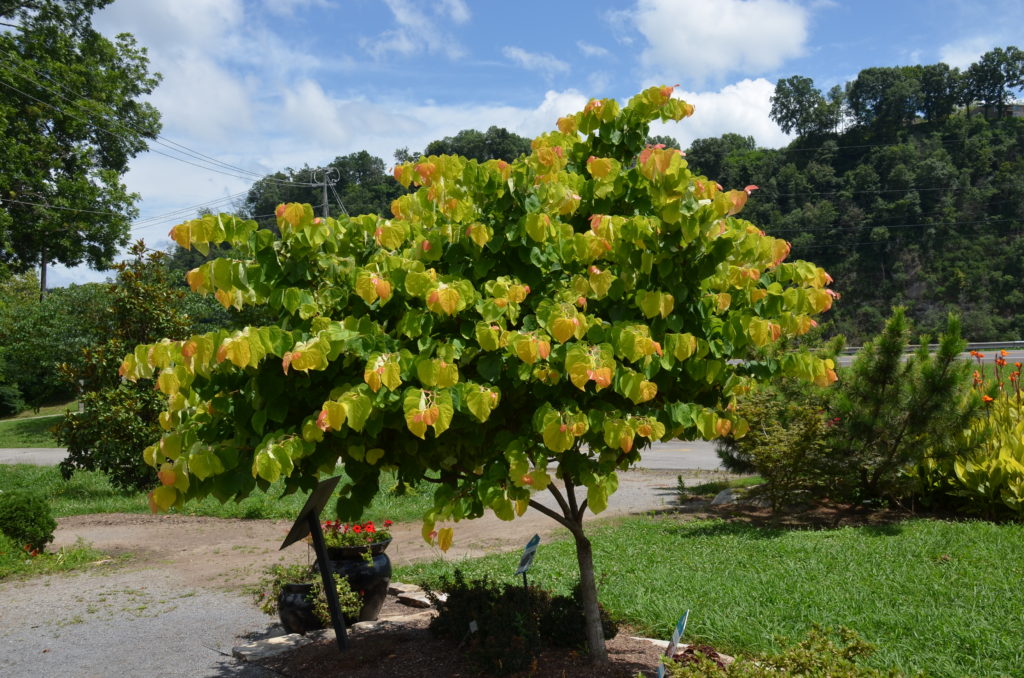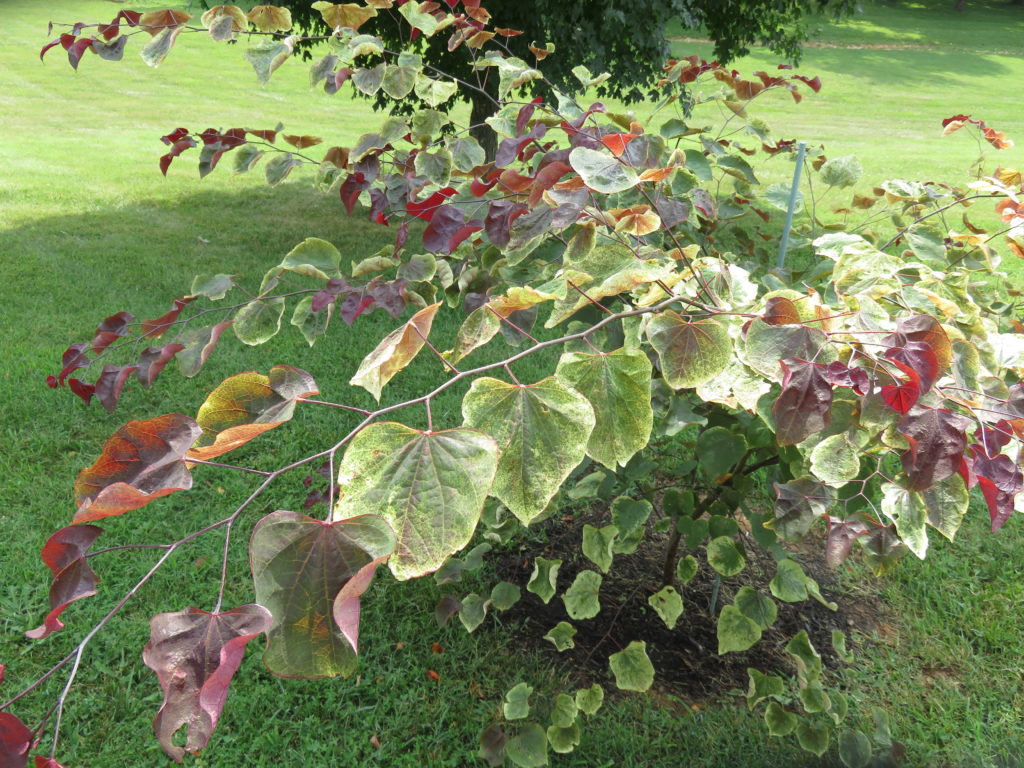
Native redbuds Cercis canadensis) is native to eastern and central North America (USDA hardiness zones 4-8). This small tree is a highly dependable small flowering tree. Redbud is typically a relatively short-lived tree, perhaps 20-30 years at best. Depending on variety, their lavender / pink/ white pea-like flowers emerge in early spring, usually a week or two before our native dogwoods (Cornus florida).

Fifty years ago, most U.S. gardeners were unwilling to buy redbuds. Over the past 25 years numerous varieties flaunting colorful foliage continue to arrive at local garden centers, the green heart-shaped redbud foliage is not valued for their foliage tree. The introduction of ‘Forest Pansy’ redbud in 1950 changed the way we utilized this wonderful native tree in the landscape. What followed has been “A Redbud Revolution”.
Listed in the colorful foliage category are nine modern day redbud varieties. At the end I have included two cultivars with unusual thick glossy leaves:
‘Alley Kat’ – green & white splotched foliage
Carolina Sweetheart™ (‘NCCC1’) – spring foliage emerges rich maroon, and slowly changes to shades of white, green, hot pink; ending green with faded white margins in late summer.
Flame Thrower™ – new leaves start out burgundy-red, turn bright yellow and green as foliage ages.
‘Hearts of Gold’ – spring’s golden yellow leaves turn to chartreuses in summer. Leaves may sunburn (scorch) during hot dry summer.
Merlot™ – fade-resistant dark burgundy foliage
‘Pink Pom Poms’ (PPAF) – thick, glossy green foliage and dark pink-purple, double pom pom-like flowers.
Ruby Falls® – weeping form with purplish red foliage.
The Rising Sun™ – apricot/gold foliage that rarely burns in the summer heat.
‘Whitewater’ ̶ weeping form with leaves that emerge mainly white with minimal flecks of green; foliage matures mostly green with flecks of white.
Thick High Gloss Green Foliage (C. canadensis var. texensis)
‘Texas White’ (white flowers)
‘Oklahoma’ (lavender-pink flowers)
‘Oklahoma’ (lavender-pink flowers)A

 Posted in
Posted in 
